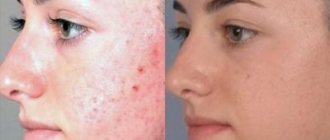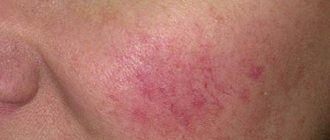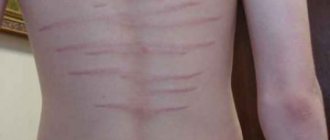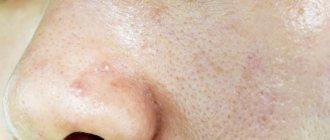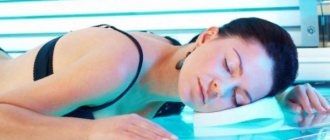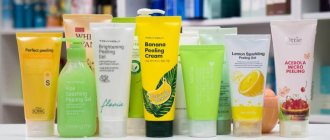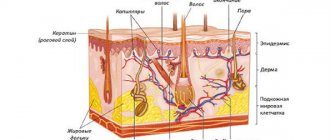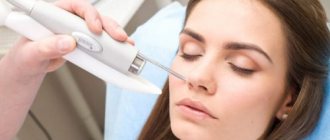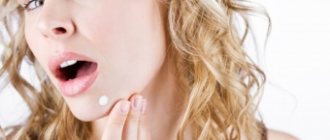Peeling is one of the popular cosmetic procedures for cleansing the face. It is aimed at getting rid of acne, comedones and other skin defects. Cosmetologists claim that this service is in demand not only among women, but also among men. The procedure is carried out using chemicals or a special apparatus. But in some cases, after peeling, acne appears, and patients begin to feel that instead of getting rid of the problem, they got new defects.
Acne appeared after peeling: reasons
Sunburn
One reason the skin on your face may peel and break out after exfoliation is sunburn. Reason: "UV rays from the sun actually kill skin cells," says Joshua Zeiner, MD, director of research at the Medical Center. Mount Sinai in New York.
“When this happens, the dead cells are sloughed off (through exfoliation) so that new cells from tender, youthful skin can replace them.” The best way to avoid sunburn and acne is with sunscreen. Find a product that at least blocks 97 percent of ultraviolet rays, short-wave rays, which cause sunburn and redness Also, do not go outside during the peeling course and 3 weeks after it without sunscreen.
Burns can also be the result of a chemical peel, in which the dermatologist uses chemicals to literally peel away layers of skin. “The damaged skin will peel and a small rash of pimples may appear after the peel, and in more severe cases, severe burning may break out before peeling.”
Medicines
Some medications, such as retinoid products for treating acne and wrinkles, may cause your skin to break out after peeling "You may notice some pimples and flaking around the nose and mouth area" until your skin becomes more tolerant of the medication." When using retinoid creams or gels, be sure to avoid sensitive areas around the nose and eyes.
Other topical medications, such as benzoyl peroxide (which fights acne-causing bacteria), sulfamide (a type of antibiotic), and salicylic acid, can dry out the skin and cause flaking and burning, especially if you have sensitive skin.
Dry skin
When the skin is dry, the skin cells should not clump together and they begin to flake off. While cold temperatures are often the cause of dry skin, there are other factors that can cause a flaky and flaky complexion “Living in an area with low humidity and using harsh soap products can also cause moisture loss, which leads to dry skin,” says Dr. Levine.
To avoid dry, flaky skin, it's important to keep your face properly moisturized. When looking for moisturizers for your skin type, look for labels or product descriptions to indicate whether the cream, ointment, or lotion is intended to treat oily, dry, normal, or combination skin "It's also important to use gentle cleansers that don't strip the skin of its natural oils, which keep moisture stable, which minimizes peeling and flaking," says Levine, and drinking plenty of water can also help ensure your skin is properly hydrated.
What skin condition causes acne after peeling?
Certain skin conditions, such as seborrheic dermatitis and eczema, can cause the side effects of acne to occur after peeling your facial skin. Both conditions are chronic inflammatory skin conditions.
It's also important to avoid washing your face with hot water, which can irritate your skin. Instead, use warm water and a gentle cleanser that is free of fragrance and harsh chemicals, which will help maintain your skin's natural moisture barrier. After cleansing, gently pat your face with a dry towel (instead of to rub your face harshly) and apply a moisturizer suitable for your skin type
Allergies
“Facial peeling can also be the result of an allergic reaction to ingredients in cosmetics, skin care products, hair products or nail polish, which will result in new acne after facial peeling. For example, an allergic reaction to nail polish can lead to clearing the skin around the eyes Although you can react to any number of ingredients in a product, the most common triggers are preservatives such as parabens.”
Allergic reactions are often accompanied by other symptoms, such as redness and itching. To determine which ingredients are to blame for your acne, consult a board-certified dermatologist or allergist who can properly screen for potential allergies.
Additional causes of acne after cleansing
In addition to the reasons listed, the appearance of acne can be caused by your habits. After the procedure, the protective functions of the skin are weakened, and a previously harmless factor provokes a problem:
- Pimples appear on one side of the face, and the rash extends from the ear to the corner of the mouth? Most likely it's a smartphone issue. When you touch the screen, bacteria from your hands fall onto the surface; then, when talking, you press the gadget to your face.
- After the procedure in the salon, you could replace your skincare products. Although the results are usually positive, in some cases the skin reacts with redness and rashes.
- Did your cosmetologist recommend probiotics? The product gets rid of acne, but sometimes the effect is the opposite. If the situation does not improve after a couple of weeks, contact the professional who performed the cleaning.
- If you use regular tap water to wash your face, there is a risk that it contains metals that cause allergies. Before cleansing, the skin was protected by a layer of keratinized cells, and intolerance did not make itself felt. In addition, metals in water oxidize on the skin, which affects pH levels. As a result, rashes do not take long to appear! To avoid this phenomenon, use boiled water or install filters.
- After cleaning, you can take care of it with such zeal that you cause damage to the integument. Of course, a one-time visit to the salon is not enough if you have naturally oily skin. But you should wait with intensive procedures, and after the recovery period, do not overuse skincare products. To problem areas, just apply a product from North American Herb and Spice: Oreganol P73 you can buy on Amazon.com.
Still have questions about how to avoid acne after cleansing your face? Watch a video about proper care: follow the recommendations, and you will be able to forget about acne or blackheads.
Salicylic and carbon peeling
Of course, acne after chemical peels is not uncommon. This is an invasive type of procedure that can cause significant harm if the rules are not followed. It is much safer to use “soft” types of peeling when cleansing your facial skin. Such procedures include carbon and salicylic types of procedures. They are suitable even for those girls who have sensitive skin.
Carbon peeling involves using a laser during treatment. Therefore, there is minimal impact on the epidermis. The appearance of acne after such exposures is rare. This is possible due to the development of an allergic reaction. It occurs due to the stress that the skin experiences during the treatment process.
Most often, acne after facial peeling appears after treatment with salicylic acid. But this phenomenon is explained by improper preparation for the procedure. This can happen if the cosmetologist has not diagnosed the presence or absence of dermodex mites on the skin. Also, during the period of exacerbation of a chronic endocrine disease, such effects are unacceptable. The procedure in this case almost always ends with the appearance of rashes.
If pimples appear after carbon or salicylic peeling, you should not squeeze or scratch them. The dermatologist prescribes antihistamines, which are taken for 3 days. The face is wiped with an antiseptic.
Almond peeling
Of course, acne after peeling can upset every girl. However, the likelihood of their occurrence after a gentle procedure is much less. This is true for almond peeling. During the treatment process, preparations are used that are made on a basis that is safe for skin health. Therefore, rashes in this case are practically excluded.
The almond base, unlike other types of compositions, does not remove the top layer of the epidermis. It does not cleanse the deep layers of the dermis. This procedure is indicated for young girls who have relevant skin problems. Almond peeling is allowed even in the presence of visible inflammation on the skin.
The only reason why rashes may appear after such a procedure may be the penetration of infection into the epidermis. In this case, the treatment regimen is prescribed by the doctor based on the characteristics of the patient’s body and the causes of the pathology.
CAUSES OF RASCHES
The reason why acne appears after peeling is difficult to determine on your own. That is why it is better to contact a specialist - a cosmetologist or dermatologist who will understand the situation.
There are four main sources of the problem.
Allergy
First you need to rule out an allergy to the drug. Otherwise, the recovery period will likely become noticeably more difficult. In addition to red pimples, after peeling you may experience severe swelling, possibly fever, general weakness and other similar symptoms.
The composition of the drug must be clarified in advance. If you have the slightest doubt, you should first apply the substance to a small area of skin: for example, on the bend of the elbow. Facial cleansing will have to be postponed until later, but it is guaranteed to be safe.
Allergies can also be caused by poorly selected care products that are used after peeling, as well as preparations for preparing for exfoliation. In addition, an allergic rash can be associated with the presence of dust in the room, animal hair, pollen and food.
The appearance of rashes due to contact with allergens and their presence in the air cannot be ruled out. Therefore, after cleaning, it is worth examining the composition of bed linen, towels and other items in contact with the face.
And yet, it is generally accepted that the most common type of allergies is food allergies. It is justified to review the diet: in particular, exclude foods with preservatives and dyes, citrus fruits and sweets.
The most common allergens in food
- Radish
- Caviar
- Oranges
- Mayonnaise
- A pineapple
- Nuts
- Honey
- Chocolate
- Cakes
- Alcohol
It is worth giving preference to boiled meat, porridge, fermented milk products, and replacing nut cookies with dry crackers and croutons.
The causes of skin irritation are determined by an allergist using a blood test.
Improper care
Essentially, the face after a chemical peel is one big “wound” open to infection.
At this stage, accelerated regeneration of epidermal cells occurs, and it is critically important not to harm the body
In addition, you need to avoid activities that cause excessive sweating.
It is worth postponing the sports section or visiting the sauna for at least 2 weeks.
You will have to regularly cleanse your face with hypoallergenic products, including disinfectants, and also carefully remove remnants of cosmetics and creams.
Wrong choice of procedure
In salons, as a rule, they carry out superficial and medium types of exfoliation, which affect different layers of the epidermis. They help get rid of various aesthetic problems.
The cosmetologist’s task is to correctly assess the situation and select the most effective procedure.
It is always better to consult a specialist before choosing a particular cleaning. If the goal is to fight acne, you need to figure out which layer of the skin to target in order to get rid of rashes.
If large internal acne has formed after peeling, superficial cleansing will be powerless - it will only renew the upper layers of the epidermis, and the pimples will remain in place.
Hormonal imbalances and infections
Cleaning will also be useless if the cause of the rash lies in hormonal imbalances.
The best option is to take a hormonal blood test and consult with an endocrinologist before exfoliation.
Sometimes it is possible to get rid of rashes with the help of hormonal drugs.
There is a possibility that acne (pimples) appeared due to infectious diseases that worsened after chemical peeling. Therefore, before the procedure, it is worth taking a test for staphylococcus and demodex.
WHAT TO DO
If rashes appear after peeling, you should report them to your cosmetologist. The specialist will evaluate whether the procedure was carried out correctly and whether there are any errors in care, and will also eliminate bad cosmetics and select hypoallergenic ones.
In general, the recommendations boil down to the following:
- Pimples should not be squeezed.
Even without additional stress factors, squeezing out inflammation at home is fraught with infection. This, in turn, leads to the appearance of large ulcers. In principle, only cosmetologists should squeeze out pimples during cleansing: with antiseptics and disinfection of instruments. - It is necessary to use disinfectants and anti-inflammatory agents for acne .
The face should be regularly cleansed with Miramistin or other similar drugs that should be prescribed by a doctor. To relieve inflammation, zinc-based cosmetics and those containing Metronidazole are recommended. If rashes after peeling appear due to allergies, you will need to take antihistamines. - Strict adherence to the rules of care
also helps in the successful fight against sebaceous plugs. It is worth remembering all the recommendations for care after peeling: avoid decorative cosmetics, protect the sebaceous glands from active work and excessive sweating, and then the problem will disappear in a maximum of 2-3 weeks. There is nothing shameful in regular cleansing - skincare procedures should be carried out even if you have to wash your face in the office at the height of the working day.
We recommend: BODY TANING AND PEELING. TOP 3 recipes before tanning
Recipes for mixtures for peelings at home
Not everyone has the opportunity to go to a salon and pay a lot of money for such a session. Therefore, there are light peelings that will not harm the skin; you can prepare them at home.
Whitening: peel 1 fresh cucumber, grate and squeeze out the juice. Separately combine 1 tbsp. oatmeal with 1 tsp. fine sea salt. Add the squeezed juice and stir until smooth, then add a couple of drops of essential oil (jasmine, patchouli or rose). Cover your face with the mixture, rub in with light massage movements for 2-3 minutes, then wait another 10 minutes and rinse with warm water.
Soda: Apply the gel or special soap you usually use to wash your face, lather and apply a little soda on top. Massage the skin with smooth movements (do not press or rub too hard, otherwise microtrauma may occur). After 2-3 minutes, rinse off the mixture with cold water. Gives a matte effect and tightens enlarged pores.
https://netpryshhei.ru/www.youtube.com/watch?v=wNaBSJSlu1c
Egg: Grind eggshells in a coffee grinder. 1 tsp Add the mixture to 1 yolk and mix. Add 1 tsp to the resulting composition. cream or sour cream. Apply to face, massage for 1-2 minutes, leave for another 10 minutes. Rinse your face with a small amount of warm water. Perfectly evens out dry skin prone to flaking.
Oatmeal: 1 tbsp. Mix oatmeal with 1 tsp. honey, 1 egg yolk and add 1/2 tsp. soda Apply to face, massage for 3-4 minutes, rinse with cool water. Suitable for oily and combination skin.
Toning: grind dried citrus peel (tangerine, orange, grapefruit or lemon) in a coffee grinder. In 1 tsp. Add warm water to the resulting mixture and mix. When you get a homogeneous mass, place it on your face, massage for 2-3 minutes and rinse with water. Returns tone and gives a fresh look to the face.
Nutritious: Boil a few beans until they become soft. After this, crush them well, add 1 tsp. olive oil and a few drops of lemon juice. Rub into skin for 2-3 minutes and rinse with water. Excellent nutrition and whitening for dry skin.
https://netpryshhei.ru/www.youtube.com/watch?v=t6HI6Jc1j5I
Medium and deep peeling affects the deep layers of the dermis and should only be carried out by certified specialists. The mistake of many young people is that, wanting to get a quick effect, they do a medium or - even worse - deep cleansing of the face from dead cells. This kind of peeling is done exclusively on mature skin; it will only cause harm to young skin, because... up to 23-25 years of age, rapid self-renewal of the skin occurs and it does not require additional external influence.
Comprehensive care after facial cleansing
Visits to the salon will not be a panacea: to prevent new acne from covering your face, take care of comprehensive care. Make adjustments for your skin type, because normal skin will require cosmetics containing chamomile extract and aloe vera. You should not get carried away with scrubbing, since once a week will be enough.
When it comes to moisturizing, choose products that do not form films on your face. Occlusive agents that create an additional protective barrier are contraindicated in your case. They are designed for those who suffer from excessive dry skin. The gels that your cosmetologist will recommend are suitable for you: their formula includes proteins and polysaccharides.
Before and after a course of cleansing
Those with oily skin should dry it gently and gently. You will be able to cope with the task if you use cleansers with ammonium or zinc lactate. Scrubbing is done 2 times a week. Take care of moisturizing, although those with oily skin often neglect this step. But applying a light serum or gel with anti-inflammatory ingredients will prevent acne from appearing.
If you have dry skin that is prone to breakouts, use oil-based cleansers. Creams with salicylic, citric or glycolic acid are suitable for care, but check their use with your cosmetologist.
Is your skin prone to acne? With any type, you will need to pay attention to cleansing. Washing should take at least 2 minutes, and during the process you should carefully walk through problem areas. Alcohol-based products are prohibited: this component will be replaced by fruit acids.
What will my skin look like after a glycolic peel?
At first, your skin will be slightly pink or red, depending on how your skin responds to the treatment. After a few days, you may notice slight flaking or flaking of the skin. This is normal and is a sign that the treatment process is working and removing the top layer of dead, damaged skin .
As the layer of dead cells sheds, your skin may appear a little drier than usual. Once the transition is done, your complexion will appear fresher and brighter.
If the percentage of glycolic acid in the peel is too high, acne may appear during the first procedures, which should disappear within 2-3 days. If such inflammations recur during subsequent peels, it is recommended to stop performing such procedures.
What rashes after cleansing are considered normal?
Should acne always be a cause for concern? The answer comes from cosmetologist Kate Sommerville, who is regularly consulted by Jessica Alba and Lauren Conrad. She claims that after cleansing, the skin gets rid of toxins and impurities, which is why it breaks out. In most cases, they resolve without additional interventions.
When you go to a salon for treatment of ulcers, acne and blackheads, be prepared for the fact that immediate transformation will not happen. After all, we have to eliminate pollution that has accumulated over the years! Remains of cosmetics, sebum, dirt are hidden deep in the pores. When a doctor cleanses and uses masks for detoxification, the plugs seem to be pulled out. You will need to wait: when the resulting rashes go away, the skin will become clear.
How do you know that the defects that appear are a common occurrence that will disappear in a few weeks? Pay attention to their type, because after cleansing, small pimples with pus appear on the face. Use masks recommended by a cosmetologist and reduce the appearance.
If you decide to clean your face with chemical or vacuum peels, then an aggravation will be natural. After all, a layer of dead skin cells is removed from the skin, and the imperfections hiding underneath become more noticeable. After 2-3 weeks the problem disappears.
An opinion on the issue is expressed by Pablo Pritchard, a practicing plastic surgeon from the USA. He claims that acne after chemical peels is normal. Sometimes acne occurs even in cases where the skin seemed healthy before cleansing. The fact is that peelings accelerate the production of skin cells and stimulate all processes. Small pimples that would have formed later form faster.
A rash also occurs because you have removed the manifestations, but not the cause of the disease. It is important that you understand the results that can be achieved by cleansing your pores. A procedure with a cosmetologist is not the application of makeup, which is aimed at immediately hiding defects. Cleaning is comparable to working out at the gym: you don’t expect to become beautiful after just one visit. You will see the benefits of the process in a few days when the skin recovers.
Acne appeared after peeling, what should I do?
Step-by-step instructions on what to do when acne appears after peeling on the face:
Although acne is often the result of too much oil and dead skin cells accumulating in the pores, in this case you will likely have another unpleasant acne symptom - peeling of the skin, which can cause the adverse reaction of pimples and redness on the skin of the face. As this reaction develops, your skin will likely become itchy, cracked, and draw even more attention to your acne. Fortunately, there is a way to keep your skin from peeling, even while you're undergoing a facial peel:
Step 1
Use a gentle cleanser twice a day Look for a product that is free of fragrance, parabens, sodium lauryl sulfates and fatty oils This will ensure you get the gentlest cleanse possible while removing dirt and oil Wet your face, apply cleanser or foam and wipe on the face, long before rinsing with warm water. Later, wash your face with cold water to tighten the pores.
Product that can be used at the first stage: Salicylic lotion without alcohol Stopproblem! .
Step 2
Soak a cotton ball with a water-based toner or lotion and rub it all over your face to remove more dirt and dead skin cells. Avoid using a toner that contains alcohol, as this will further dry out your skin and make your exfoliation worse.
Step 3
Apply an acne medication once daily or every other day, depending on the severity of your skin situation. Start with a topical treatment once daily that contains salicylic acid or benzoyl peroxide. If flaking worsens, reduce treatment to once every two days. .
At the third stage, you may need Salicylic zinc paste.
Step 4
Apply an oil-free moisturizer immediately after using acne treatments. It will soothe the skin from exfoliation and any associated itching. Use a small amount of oil-free moisturizer and spread it over your entire face, paying particular attention to the areas that dry out the most, usually around the nose, chin, cheeks and forehead. At the fourth stage you may need: Delexacne acne moisturizing gel!
At the fourth stage you may need: Delexacne acne moisturizing gel! .
Step 5
Apply any oil-free sunscreen every day, regardless of whether the weather is cloudy or sunny Apply the cream at least 15 minutes before going outside Exposure to the sun and ultraviolet rays will dry out the skin even in cloudy weather In addition, many acne medications do Your skin is photosensitive, so using sunscreen is essential to properly protect your skin.
Salon treatments: acne treatment after cleansing
To improve the cleaning result or cope with undesirable consequences, the cosmetologist recommends additional procedures in the salon. These include darsonvalization - exposure of the integument to weak current pulses. As a result, blood vessels dilate and blood circulation improves, which promotes healthy skin.
Cryotherapy, as the effects of liquid nitrogen are also called, involves combining cold with a gentle massage. The method is used in cosmetology and dermatology; it perfectly normalizes the functioning of the sebaceous glands and eliminates rashes.
The number of procedures is determined depending on the initial condition of the integument.
Characteristic manifestations
When exposed to a chemical allergen, there can be a slow or immediate reaction. The development of pathological symptoms is possible immediately or the next day after cleaning. It is more dangerous if signs of the disease appear immediately. In this case, there is a risk of angioedema or anaphylactic shock. After applying peeling, problems are observed in the form of:
- Urticaria. This is the most common problem. The face and mucous membranes are covered with rashes, itching and burning are bothersome. The pain is especially acute at the injection sites.
- Swelling. The eyelids and lips become enlarged, and the eyes become swollen.
You need to be able to distinguish allergies from complications after peeling:
- If this is an infectious process, then purulent rashes appear and body temperature rises.
- If chemical or mechanical action is too aggressive, subcutaneous hematomas are formed. In this case, the face swells and bruises appear.
- With a chemical burn, inflammation and blisters are formed, filled with liquid inside.
An allergic reaction causes watery eyes, a runny nose, and bouts of dry cough.
Yellow or retinoic peeling is popular. If red spots and swelling appear after a retinoic peel, this is considered normal. The condition will return to normal within three days.
What not to do after cleansing your face
After you clean your pores, follow these guidelines:
- Take your time to make homemade masks. Immediately after the procedure, the skin is sensitive, so wait a week to use additional products. An exception can be made only for products recommended by a cosmetologist.
- You should not resort to self-massage, because it leads to the spread of infection.
- Since chemical, vacuum and other procedures remove the layer of keratinized epidermal cells, barrier functions are weakened. To protect your skin from the aggressive action of the external environment, try to spend 2-3 days less in the air.
- Stop using a cotton pillowcase and replace it with a silk one. The recommendation is made by dermatologist Dennis Gross, who works in the USA. He says that silk or satin will not cause microtrauma to the skin during friction. In any case, the pillowcase must be changed regularly, otherwise it will become a source of bacteria. Remnants of styling products that fall onto the fabric from the hair also accumulate on it. Then they end up on your face, and irritation is not long in coming.
- Skin care products are not cheap, and you will definitely want to get the maximum effect. But if you apply them in the wrong order, it will affect the result. Start with products with a lighter texture, and only then move on to dense products.
- Don't overuse serums in hopes of achieving perfection. Crystal McElroy, esthetician from Florida, Fr. If you are trying not only to get rid of acne, but also to solve additional problems, alternate the types of serum.
Follow these recommendations, and there will be no complaints about your skin condition.
Causes of acne and red spots after peeling
The paradoxical phenomenon - the formation of pimples and red spots after peeling - occurs for many reasons. Regardless of what type of procedure was performed, certain side effects may occur. Don't worry about:
- Peeling. This is a natural reaction of the skin to its “forced” cleansing of the upper layer of the epidermis. On the contrary, if this is absent, then it indicates that the cosmetic manipulations were performed incorrectly. Peeling lasting a week is considered normal.
- Redness. They belong to a chemical burn and often appear after peelings performed with acids - glycolic, salicylic and others. The first degree of burn is characterized by mild redness and indicates that the cosmetic procedure was carried out correctly. If the red spots after peeling are pronounced and itchy, then this is a second degree burn, which is a sign of violations of the cleansing by the cosmetologist.
Peeling and hyperemia of facial skin after peeling
As a rule, red spots persist for 5 days of the recovery period.
Swelling of the face and neck. This is an inadequate reaction to deep peeling, which is more typical for sensitive skin. Disappears already 2-3 days after the procedure, the doctor can give recommendations on taking antihistamines to speed up the recovery process.
The formation of acne after peeling is always a deviation from the norm. Cosmetologists identify several reasons for this phenomenon, which fall into three groups.
And here is more information about facial care after TCA peeling.
Cosmetic reasons
They are not pathological, they can be predicted and prevented. The main thing is to contact a competent and experienced cosmetologist for a cleansing procedure. What is included in the concept of “cosmetological reasons” for the appearance of acne after peeling:
- Incorrect type of procedure. Young people are generally not recommended to undergo it, and if there is a need for this, then under the age of 25 years, preference should be given to superficial peeling using fruit acids.
- Deep cleansing of the skin is allowed only after 25 years and as prescribed by a cosmetologist.
- Carrying out the pre-peeling procedure with violations. Against this background, ulcers appear, which are difficult to treat and can cause widespread inflammation throughout the face. The rules for preparing the dermis for peeling depend on what type of skin is to be cleansed.
For example, for oily/combined skin, it would be appropriate to carry out ultrasonic cleaning for several days, and if there is a predisposition to herpetic eruptions, then taking antiviral drugs (Acyclovir).
Improper care during the recovery period. It is necessary to remember the existing protocol of caring procedures for the rapid restoration of the epidermis, which excludes touching the skin with dirty hands, “forcibly” tearing off crusts, and the use of decorative cosmetics.
For information on what you should not do to care for your face after a chemical peel, watch this video:
Dermatological reasons
Everything is serious here, since such acne requires not only full treatment, but also an in-depth examination. What can cause the problem:
- Demodex mite. It can infect the entire surface of the face, so some examination of the client is necessary before the cleansing procedure. Signs of the presence of Demodex mites in the sebaceous glands and hair follicles are constantly present foci of inflammation, widespread severe redness and pustular rashes.
- Improper functionality of the sebaceous glands. Dermatologists call this phenomenon after peeling stress and associate it with increased secretion production by the sebaceous glands. A sign of this will be the appearance of tubercles with purulent contents on the face.
If we consider exclusively the medical reasons for the appearance of acne after peeling, then it is worth highlighting the illnesses of the client himself. Often this side effect occurs against the background of existing hormonal imbalances and long-term use of certain medications.
Household reasons
In many cases, the appearance of acne in the post-peeling period indicates that in the first 3 to 5 days there was a visit to the sauna, steam bath, or taking a bath with too hot water. The second reason is intensive sports activities during this period. The fact is that this leads to increased sweating, and for the dermis without a durable surface layer this is real stress.
How to deal with acne
There are quite a lot of methods for solving the problem of acne after a cleansing procedure, some of them can be prescribed/carried out independently, but most often you will need the help of a dermatologist or cosmetologist to get a positive result.
After glycolic peeling
Glycolic acid helps cleanse only the surface layer of the epidermis, which ensures the disappearance of age spots, small and frequent rashes and even shallow wrinkles. If the procedure is performed by a professional, then most likely acne will not appear after it - the concentration of the acid solution will be correctly selected and pre-peel preparation will be carried out. But if acne does form, you should do the following:
- Wipe your face with Miramistin daily 2 or 3 times,
- take a course of antihistamines - Claritin, Suprastin, 1 tablet 2, 3 times a day for 5, 7 days,
- For washing, use only Tar soap.
It is strictly forbidden to squeeze out pimples, burn them with alcohol-containing products, or disguise them with decorative cosmetics!
If after 7 or 10 days the acne has not disappeared, there are even more of them, or the rash has spread to the neck, then you need to seek qualified medical help. Most likely, full treatment with medications will be prescribed, but first the doctor will identify the true cause of this phenomenon.
After Jessner
This is an aggressive acid peel, after which acne most often forms. This is due to the fact that the composition of the solution penetrates into the deep layers of the dermis and acts as irritatingly as possible. Preparation for peeling and subsequent recovery after the procedure should be carried out professionally, because only this will help avoid problems.
What to do if acne has already appeared after Jessner:
- wipe your face several times a day with any anti-inflammatory lotion or antiseptic that does not contain aloe juice or alcohol,
- take 2 tablets of Acyclovir (an antiviral drug) for 5 or 7 days,
- If there is swelling and redness against the background of acne, then start taking antihistamines.
As a rule, the appearance is restored after 7, 10 days, but if no improvement occurs in the first 3, 4 days of enhanced measures, then you should immediately seek help from a cosmetologist or dermatologist. In the case of an infectious lesion of the dermis, no antihistamines or lotions will help; full treatment will be required.
After salicylic, carbon peeling
These two types of cleansing procedures are considered the safest, “softest” and suitable for even sensitive facial skin. The appearance of acne after carbon peeling is generally very rare, since the laser is used during the procedure. The only thing that can provoke such a side effect is the body’s allergic reaction to a stressful situation.
As for salicylic peeling, it can result in active rashes and even the formation of ulcers only if the preparation for the procedure is improper. For example, if the specialist did not find out the presence/absence of Demodex mites on the skin, or the client himself went for peeling with acute chronic endocrine diseases.
What to do if acne appears after salicylic or carbon peeling:
- do not press, do not scratch, do not open,
- take antihistamines for 3 days,
- seek advice from a cosmetologist or dermatologist,
- Regularly wipe your face with any antiseptic.
This is something that you can do yourself, and any other appointments should only be made by a specialist.
After almond peeling
In fact, this is an exception, and the doctor will probably be very surprised if a patient comes to him with a similar problem. The fact is that the almond cleansing base is absolutely harmless; it is not even able to remove the top layer of the epidermis in order to cleanse the entire dermis more deeply. That is why this type of peeling is used for young girls according to indications; it is allowed to be carried out even in the case of visible inflammatory lesions on the skin.
The only reason why acne may occur after almond peeling is the penetration of an infectious agent into the skin. But in this case, only a professionally selected treatment regimen with specific medications will help.
After yellow
Another type of safe peeling is yellow (or retinoic). It affects only the upper layer of the epidermis, so it extremely rarely provokes any side effects. Acne after yellow peeling occurs only for dermatological reasons or in case of complete non-compliance with the rules of the recovery period. In any case, the problem will need to be addressed by a doctor.
Regardless of what type of peeling procedure was performed, if acne appears, you should seek qualified medical help. If the rash does not disappear on days 5 or 7 and is actively spreading, then urgent therapeutic measures will need to be taken. Usually the list of appointments from a dermatologist/cosmetologist contains:
- Panthenol cream - applied in a thin layer to the skin with rashes, accelerates the healing/restoration of the epidermis, relieves inflammation,
- clindamycin lotion – disinfects, applied at night,
- Chlorophyllipt - periodically wipe acne-affected areas of the face with it throughout the day,
- Bepanten cream – accelerates the healing of acne.
If the cause of rashes after peeling is the Demodex mite, then a course of therapy with Trichopolum in tablets and external use will be required.
Recommendations for pre-peel preparation
The successful outcome of facial peeling largely depends not only on the procedure itself, but also on competent actions before and after cleansing.
The likelihood of a positive completion of the cleansing cosmetic action will be much higher if you contact a cosmetologist who has been tested by time and positive reviews from other clients.
Strictly follow the specialist's instructions for preparing the skin for peeling.
You should not engage in amateur activities and do experiments, because the face is, as a rule, the first thing people pay attention to
You cannot blame the unprofessionalism of a cosmetologist if you did not listen to the advice of peeling experts and chose the wrong season for a cosmetic procedure. It is undesirable to do some types of peeling during the hot season; it is better to shift the schedule of the cleansing procedure to another period.
What rashes after cleaning are dangerous?
Although the appearance of acne is normal, in some cases you should rush to see a dermatologist:
- Bright red, rash-like areas appear after chemical burns.
- When the face becomes covered with small itchy pustules, this indicates an allergic reaction. It is caused by products used after cleansing and care products. There are cases where patients showed intolerance to the component included in the cream with protection from ultraviolet rays.
- Deep subcutaneous acne occurs when the cosmetologist used a product that was too greasy when cleaning. You should not squeeze pimples, as this can lead to infections.
If in doubt, do not try to figure out on your own how dangerous the rash is. Contact the cosmetologist who performed the procedure or a dermatologist.
Rashes on the face can be caused by various factors: stress, temporary hormone imbalance, and an allergy to a product you ate before or after the procedure play a role.
What to do after peeling to avoid redness
What to do after peeling to avoid possible acne? To prevent post-peeling rashes, you should follow a number of recommendations:
At first, it is worth completely eliminating the impact of decorative cosmetics on the skin. Try to stay in the heat as little as possible, in places directly exposed to the sun's rays (to avoid sunburn). The use of creams with a high level of SPF filter (to protect renewed thin skin from ultraviolet rays). Exclude scrubbing from your care (so as not to cause injury to skin that has not yet reached the required thickness). Follow the recommendations of the cosmetologist who performed the peeling and determined the needs of the client’s skin type. When cleansing the skin, you should choose foams or gels
Their light structure allows them to be better absorbed into the skin, cleansing it from the inside, which is especially important for dry skin. Do not touch your face with your hands (otherwise you may cause infections or micro-injuries). Temporarily minimize physical activity that increases sweating (the sebaceous glands did not have time to fully renew themselves after peeling).. https://www.youtube.com/embed/TO7N32U8XrU
If you follow these rules, the risk of situations where your face becomes covered in acne after peeling is significantly reduced. The healing process is much easier and painless and the skin quickly acquires a healthy and well-groomed appearance.
Some general tips
To minimize the risk of acne after peeling, you need to follow a few simple recommendations. Carry out the procedure only by an experienced, qualified specialist. He must comply with all hygiene standards and requirements.
Before the procedure, the cosmetologist must exclude the possibility of the presence of dermodex mites on the skin. Otherwise, such exposure is contraindicated.
If you are taking medications or have chronic diseases (especially endocrine diseases), you need to warn your cosmetologist about this.
After the procedure, you need to apply a moisturizer with an ultraviolet filter to your skin. The skin becomes vulnerable after peeling. Therefore, she needs protection and proper care. During the recovery period of the epidermis, sports, visiting the bathhouse, and the beach are prohibited. You should also avoid taking a hot bath.
It is best to visit a dermatologist before undertaking such procedures. He will give recommendations on choosing a peeling technique. Perhaps this procedure is contraindicated for you. Therefore, you need to take a responsible approach to choosing care procedures. Also, you should not carry out such effects at home.
Acne after chemical peeling
Chemical peels are performed in beauty salons by a specialist and a medical esthetician. The doctor first thoroughly cleanses the skin. These solutions include glycolic acid, salicylic acid, trichloroacetic acid and lactic or carbolic acid. He then applies one or more chemical solutions to small areas of the skin. During and immediately after the procedure. you may have a slight burning sensation, but it only lasts a few minutes.
Chemical peels remove or destroy the top layers of damaged skin, reducing any signs of damage. The skin is then resurfaced and its overall tone and texture are improved. For optimal results, more than one treatment may be required as recommended by your physician.
Anti-acne masks after cleansing the face: recipes and rules
After visiting the salon and cleansing your pores, you can’t do without masks. But don’t try to try everything that the cosmetics store offers: a cosmetologist will give recommendations. If you are developing care yourself, pay attention to the products that have received positive reviews:
- Peter Thomas Roth Therapeutic Sulfur Masque Acne Treatment Masque relieves acne and post-acne. The composition includes aloe extract, kaolin, bentonite clay. Action time: 10 minutes.
- The Mario Badescu brand became famous when Kylie Jenner advertised it online. Women rushed to make a purchase... and appreciated the result! Drying Mask contains calamine and sulfur to dry out pimples. It can be applied to the face, chest and back.
- Kate Somerville offers Mask Foam-Activated Acne Treatment. According to reviews, the formula helps get rid of existing rashes. After all, the sulfur included in the composition helps cleanse the pores. And to relieve inflammation, the creators added extracts of honey, bran and rice. As a result, the functioning of the sebaceous glands returns to normal.
- GlamGlow combines glycolic, salicylic and lactic acids in the Super-Mud mask. As a result, blackheads and pimples disappear, and damaged skin regains health.
- Products from Tata Harper are not cheap, but the results are worth it. The formula of the product, called Resurfacing Mask, includes pink cosmetic clay, beet extract, pomegranate and willow bark. As a result, the skin becomes smooth and soft.
The cost of products ranges from $18 to $55, so you will find an option that suits your wallet.
Types of acne after peeling
Pimples after peeling that will disappear on their own over time
Post – redness extraction Extractions of small pimples, such as those that appear on the facial skin after professional deep pore cleansing peels, are the most common occurrence of types of acne such as closed comedones and pimples. Usually, if the skin heals properly after peeling procedures, then the pimples should It is fairly easy to go through and the redness can be minimized within a week on the client's own, they may only appear once within 24 to 48 hours or so after the facial.
Pink Skin and Pimples When blood circulation slows down, the skin condition worsens, resulting in pink skin During a facial exfoliation session combined with warm steam, both processes help increase blood flow and bring new nutrients to the skin “The exfoliation procedure can cause the skin to turn pink tint and the appearance of small pimples on the surface of young skin. The skin should not look inflamed, but rather have a pleasant glow where the skin feels warm to the touch for several days after the peel.”
Post-Peel Redness Not all peels are created equal in intensity, but often with a medium or heavy peel, post-peel facial acne can occur as a side effect. This may cause some redness for a day or two after the procedure.
Pimples after peeling that are not normal
Burning spots If a cosmetologist uses chemical peeling on damaged areas, there is a high risk that the acid can eat the epidermis of the skin itself, cause a burn and lead to the formation of scars or pimples.
Allergic Reaction Itching, rash, small red bumps on the skin, welts, swelling of the throat and cough are signs of an allergic reaction. And if you experience any of the above symptoms, it is important to contact your healthcare provider immediately. “I once had a client who who was allergic to the flowers, chamomile, found in the peeling preparation" "I used a product with chamomile, a natural soothing agent used in skin care products, and after a while the patient complained that his throat began to swell and his temperature rose and after peeling new pimples appeared!” https://www.youtube.com/embed/xdiU86KoBv4%20
https://youtube.com/watch?v=xdiU86KoBv4%2520
Who cannot undergo Jessner Peel treatment?
There are several conditions that are considered contraindications for those considering acne treatment with a Jesner peel:
- Active colds, sunburn, or severe asthma;
- Lupus;
- Eczema;
- Rosacea;
- Psoriasis;
- Pregnancy;
- Chronic skin diseases and dermatitis conditions.
- The use of Jesner peeling for such diseases can definitely provoke the appearance of new acne and other side effects on the face.
Skin care after peeling
We warn you right away: if acne has already appeared, only a dermatologist or cosmetologist will help you choose care. And in our review there is a list of products for those who do not yet suffer from acne.
Moisturizing cream, rich for dry and very dry skin Aqualia Thermal, Vichy - this comfortable “isotonic cocktail” includes plant sugars from maple, birch and beech wood and hyaluronic acid. The skin is restored, calmed, and remains moisturized for 48 hours. Recommended for use morning and evening.
A multi-repairing product for skin irritated by the use of drying products, Effaclar H, La Roche-Posay is applied morning and evening to cleansed skin. Lipids, vitamins B3 and E work to restore and protect the epidermis, as well as eliminate inflammation.
The intensive moisturizing regenerating mask Hydrating B5 Masque, SkinCeuticals maintains water balance and a healthy appearance of the skin thanks to its rich composition, which includes hyaluronic acid, vitamin B5, and natural moisturizing factor components. Use 1-2 times a week.
Moisturizing facial care for all skin types Aquasource Skin Perfection, Biotherm - in one jar the benefits of 5000 liters of thermal water. The cream attracts moisture and accumulates it inside, smoothing the skin. "Water shock" provides thermal plankton extract. Apply morning and evening.
Moisturizing face cream Ultra Facial Cream, Kiehl's - comfort, balance and fullness of the skin are guaranteed by squalane, derived from olive oil, and the antioxidant glycoprotein antarcticine. Recommended for use morning and evening.
Regular peeling is the key to youthful and healthy facial skin. But there are often complaints that it is after this procedure that pimples and red spots appear. Cosmetologists know very well not only the cause of what is happening, but also methods to solve the problem.
Read in this article
How to take care of your face after removing rashes
Although cleansing the pores is effective, it is not enough to get rid of the problem. After all, you will eliminate the manifestations, not the causes. To get rid of acne, you should approach the issue comprehensively.
Preventing acne
First of all, determine what caused the rash on your face: sometimes they become signs of serious diseases. If your health is fine, make adjustments to your daily care.
Keep your skin clean
Why do acne appear after cleansing my face? Perhaps you are neglecting hygiene procedures. Many women do not remove their makeup before going to bed: not only fatigue plays a role, but also dissatisfaction with their appearance. Advertising imposes glamorous images so much that you are not ready to see your face without makeup! But give up the habit of sleeping “in full color.” Wash your face in the morning and evening: 2 times a day is enough.
Use products for your skin type
Many acne treatments contain drugs that dry out the skin. Make sure to moisturize, but look for the “non-comedogenic” label on bottles. Manufacturers offer products for oily, dry and combination skin.
Don't overuse cosmetics
A thick layer of foundation, powder, blush - their use leads to the formation of blackheads and rashes. Apply makeup sparingly and choose non-comedogenic products. Also examine the bottle: look for an oil-free formula with minimal fragrance.
Avoid long periods of sun exposure
Exposure to ultraviolet radiation causes irritation and increases the risk of inflammation and hyperpigmentation. Always use a sunscreen with SPF 30, but make sure the product you choose is non-comedogenic.
If you're going to the beach, reduce your sun exposure, especially between 10 a.m. and 2 p.m.
Watch your diet
Dermatologists have concluded that chocolate, previously considered harmful, does not cause breakouts. But diet affects the condition of the integument, so exclude fatty and junk foods from your diet. Dairy products and foods with a lot of sugar are also not good for acne. Focus on fruits and vegetables to keep your skin glowing with beauty.
If you're struggling with breakouts on your face, it's important to have faith in the results. Dermatologists assure: some patients are so worried about pimples that they bring themselves to stress. They provoke the development of new acne, and treatment is ineffective. Stop stressing about your appearance and your chances of success will increase.
General recommendations
If acne appears after peeling, you need to take a number of actions. This will quickly get rid of the problem and restore the health of the epithelium.
It is important to take into account the mistakes made that led to such negative consequences. For example, it is worth changing the cosmetic product or contacting another cosmetologist
When the first signs of a rash appear, you should seek help from a qualified specialist. This could be a cosmetologist or dermatologist. The first warning signs of problems are:
- the skin in some areas changes color (it can either darken or lighten);
- the entire surface of the face acquires a reddish-lilac tint;
- a noticeable capillary network appears.
If acne or the listed symptoms appear after peeling, you should consult a specialist. Self-medication can be dangerous. The consequences can be very sad. Skin health can be compromised due to improper actions. Only an experienced specialist will be able to select the correct treatment.
You need to take into account the advice of your cosmetologist. You may just need to wait until the recovery period passes. In most cases, after some time, the healthy appearance of the skin returns. But this is only possible if you follow all the recommendations of the cosmetologist.
The specialist will also draw up a program of action in case of acne. This is a set of special procedures that have a comprehensive effect on the epithelium. Only by taking into account the characteristics of your body, the type of procedure and the cosmetics used, will the doctor be able to select the correct treatment regimen.
How relevant is the problem of acne in your practice?
L.G.: The problem of acne becomes more relevant every year and is difficult to treat; it requires from specialists in aesthetic medicine the right tactics and timely advisory assistance from colleagues dermatologists, gynecologists, endocrinologists, gastroenterologists, the unification of scientific knowledge, and optimal medical care.
Acne is a single problem that unites specialists, in which every link is incredibly valuable.
Specialists follow protocols and scientific recommendations for the treatment of this pathology, and yet each develops his own unique methodology based on personal experience.
Acne affects almost all people, most often occurring between the ages of 13 and 23, and in 20% of cases it occurs as a moderate to severe form of the disease.
Acne is perceived as a teenage disease, but often persists into later life.
Moderate Glycolic Peel – Treats acne and mild scarring
Moderately penetrating chemical peels typically use 35 - 50% strength trichloroacetic acid (TCA), which penetrates deeper into the skin than superficial TCA peels, causing peeling of deeper layers of skin and increasing the production of collagen, elastin and other proteins that give skin elasticity. However Because 50% strength glycolic acid peels can cause complications, including scarring, doctors now often prep the skin for other treatments and then apply only 20 to 35% glycolic acid TCA. This produces similar results with fewer complications. Methods for preparing skin to 20 - 35% TCA include: freezing the skin with CO2 and acetone, using Jesner's solution, which consists of a combination of lactic acid (which helps peel off the skin), salicylic acid (which helps skin penetration) and resorcinol (which helps break up loose skin and treat acne with glycolic acid peels).
